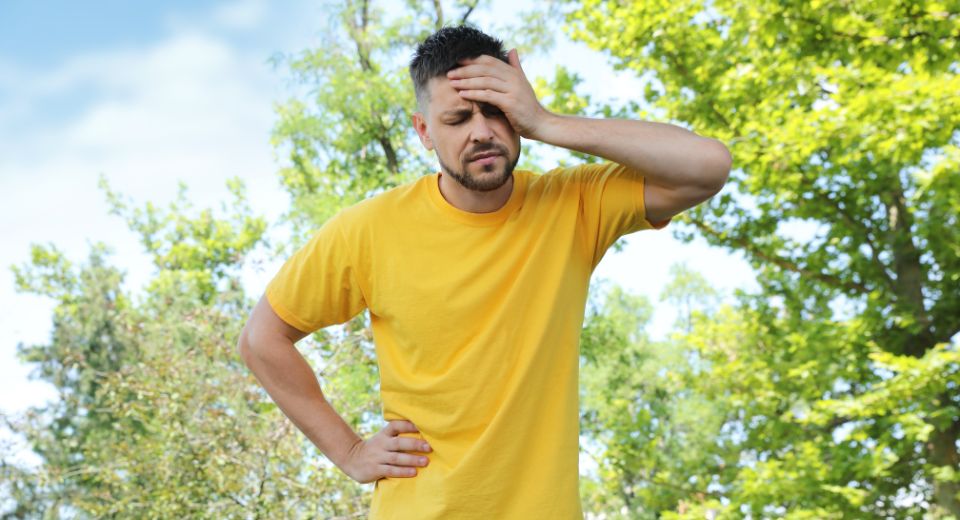
Author: Dorcas Eaves, MD
There is no age group that is exempt from heat-related illnesses. As a society, we do not adequately prepare for weather extremes, and as a result, heat and cold related illness/deaths become the topic of many news hour programs. Summer temperatures reached record highs in many parts of the country with an increase in heat related deaths, compared to the same time last year. While enjoying warm-weather activities, many fail to maintain adequate hydration, thereby threatening well-being. Additionally, student athletes who practice and play in hot environments are subject to heat injuries which are preventable.
We will explore the signs and symptoms of heat rash, heat syncope, and heat cramps along with the treatments, outcomes, and prevention.
Heat Rash
Miliaria is an acute inflammatory reaction of the skin that can be seen mainly on the torso of the body and in skin folds. It causes a burning itching superficial collection of small red vesicles, papules, or pustules on the covered areas of the torso. It is more common in hot moist climates. It can be associated with fever and heat prostration.
Individuals at highest risk are bedridden individuals who also have a fever. The rash is due to pore blockage of the sweat ducts causing secretions to accumulate inside the pore and form a “ball-like collection of secretions” under the skin. This condition is usually mild, but severe forms of this condition can occur if it interferes with the body’s heat regulation system.
Heat Syncope
Heat syncope, or fainting, occurs when the body’s vascular system dilates forcing blood pools in the extremities and depriving the brain, as well as the rest of the body, of needed fluid. The body’s pulse is weak with a low blood pressure (less than 100), and the skin is cool and clammy. The fainting is typically preceded by 2 or more hours of vigorous exercise.
Heat Cramps
The most common cause of heat cramps is loss of body fluids and electrolytes. The muscles affected will vary depending on the activity preceding the event. The upper body muscles react to activities like playing tennis, the lower leg muscles with running. The cramping is secondary to the loss of body salt from heavy perspiration through sweating and replacing the fluid loss with water. Heat cramps can last for 1-3 minutes or longer. The cramping muscles feel like a knot within the substance of the muscle. If the individual’s temperature is taken, it is usually normal or slightly elevated. Heat cramps are also associated with other vigorous exercise or activity.
TREATMENT
Heat Rash/Miliaria
Miliaria, the most common form of heat rash, is treated with topical steroid creams like Triamcinolone Acetonide 1% in a lotion base. Steroid ointments should be avoided as these occlude the pores. The steroid lotion is applied twice daily. If a secondary bacterial infection occurs, it is usually due to Staphylococcus aureus, which is ubiquitous on the skin. The antibiotic of choice is Dicloxicillin 250 mg 4 times daily for 7-10 days. If skin cultures disclose Methicillin Resistant Staph Aureus (MRSA) Bactrim DS is the antibiotic of choice.
Heat Syncope
To battle heat syncope and heat cramps, fluid replacement with an electrolyte solution is recommended. This can be done by consuming Pedialyte, Gatorade, or water with salt; the salt water solution should consist of a mixture of 4 teaspoons of table salt mixed into 1 gallon of water. The individual should also be moved into a cool shady spot while resting in a recumbent (lying down) position. Fluid resuscitation/replacement can be done by the administration of the oral fluids listed. Recovery to full function takes a few days to approximately one week.
Heat Cramps
Usually heat cramps are self-limited (go away on their own). Drink lots of fluids to rehydrate.
PREVENTION
When an individual recovers from heat stroke, he/she is at risk for future repeat events. Prevention starts with adequate hydration before, during, and after strenuous exercise. Fluid intake should be increased with heavy perspiration/sweating. A rule of thumb is 3 liters of fluid (water with added salt/Gatorade/Pedialyte) approximately every 60-90 minutes. Take frequent rest periods to allow your body to cool down, and rest in a shady area. Do not take salt tablets to replenish lost sodium as the absorption is unpredictable.

